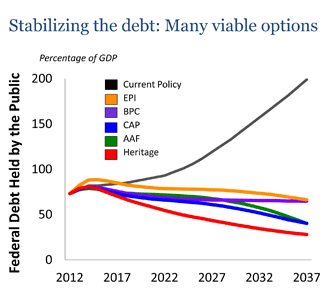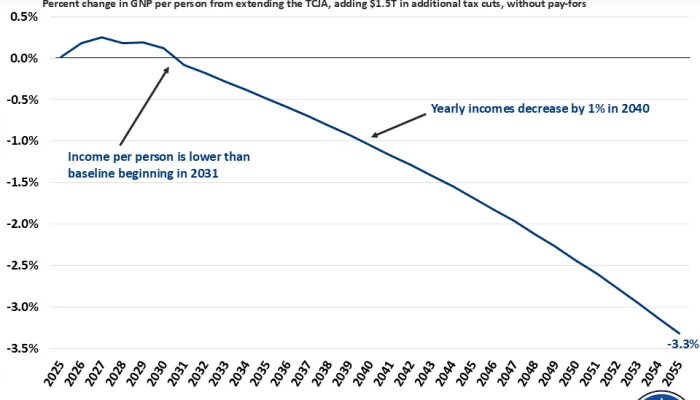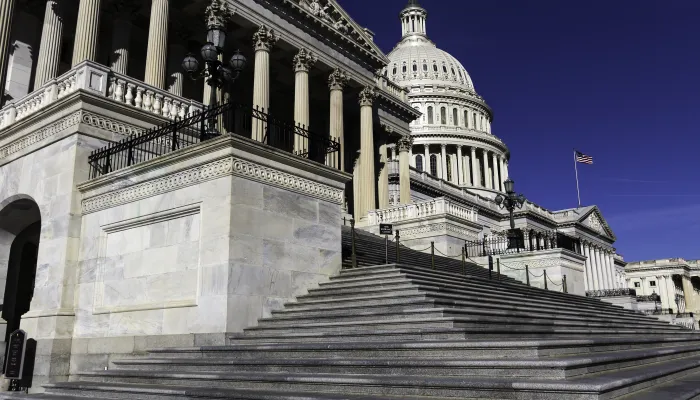Peterson Foundation Analyzes the Fiscal Cliff Deal
The Peter G. Peterson Foundation has released a new report on the American Taxpayer Relief Act (ATRA) and its effect on the long-term outlook, similiar to our previous analysis of the medium-term and long-term debt paths after the deal.
With the focus of the report on the budget outlook beyond the ten-year window, the Peterson Foundation finds that ATRA improved the long-term outlook only slightly. That same conclusion also holds when the savings from previous packages, including the Budget Control Act and various continuing resolutions, are counted. The report projects that the federal government would accumulate a public debt level of 200 percent of GDP 26 years from now under current policy. After the fiscal cliff deal, the federal government is projected to reach the 200 percent level in 27 years.

Source: Peter G. Peterson Foundation
Even if the cuts under the sequester were allowed to take place, the long-term budget outlook would still be unsustainable. While the cuts to discretionary spending would lead to smaller deficits in the short term, its long-term impact would be small given that health care and aging are the true drivers of long-term debt and the sequester would both not address them or be large enough to make up for them. Rather, policymakers will have to turn their attention to rising entitlement spending, especially on health care, and an inefficient and complex tax code to control the debt.
The report contrasts the current policy outlook to some of the proposals put forward in Peterson's Solutions Initiative II from think tanks across the political spectrum. While the think tanks differed in their appraoches, all were able to put the budget on a sustainable fiscal path, with debt continuing to be stablized in the long run.

Source: Peter G. Peterson Foundation
The analysis from the Peterson Foundation throw cold water on claims from some commentators that lawmakers have already enacted a sufficent amount of deficit reduction. Getting debt on a downward path could help ensure the federal budget is sustainable in the long-term. As the report says, we may be "past the cliff, but not out of the woods" yet.
Click here to read the full analysis from the Peter G. Peterson Foundation.


